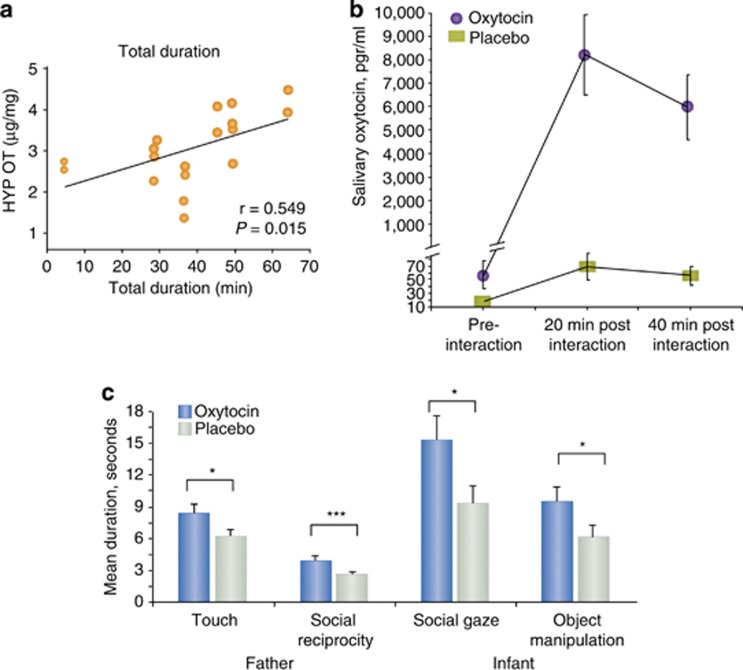Figure 2.
Social contact is associated with oxytocin system activity in rodent and human infants. (a) In neonatal rats, the duration of skin-to-skin contact with a surrogate mother after a period of isolation was positively correlated with the concentration of oxytocin in the hypothalamus. Copied with permission from Kojima et al (2012). Copyright Wiley. (b, c) In 4- to 8-month-old human infants, intranasal oxytocin delivery to their fathers resulted in a very robust increase in infant salivary oxytocin (b) and a significant increase in social gaze and object manipulation in the infants (c), perhaps mediated by enhanced social contact induced by oxytocin in the father (c). Copied with permission from Weisman et al (2012). Copyright Elsevier. *P<0.05, ***P<0.001.

